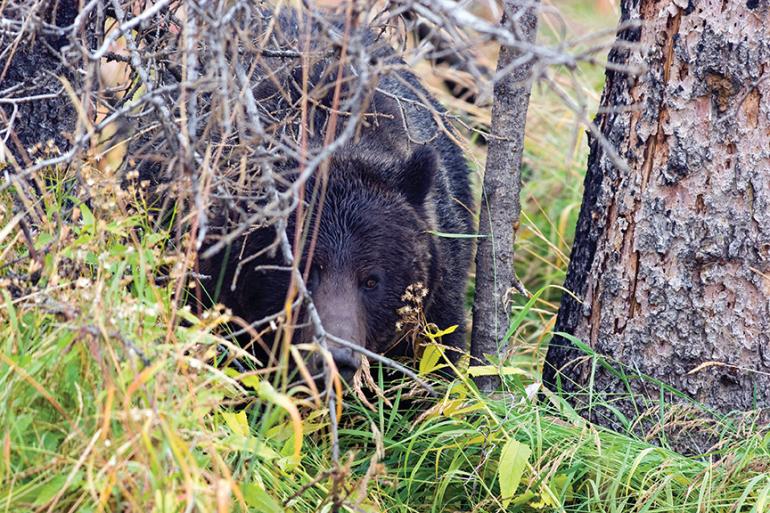Bear With Us
Montana FWP explains the delisting.
“We didn’t work on this for over 30 years to see the bear disappear.”
That was the initial response from our regional bear expert Kevin Frey when asked what he wanted people to understand about the proposed delisting of the Greater Yellowstone Ecosystem (GYE) grizzly bear population.
Frey went on. “We wanted and worked hard for recovery. We obviously wouldn’t jeopardize that. We’ve put enough safeguards in place to ensure the grizzly remains recovered.”
The “we” Frey is talking about are the cooperating three states (Montana, Wyoming, and Idaho) and federal agencies that have responded to the grizzly bear being listed as threatened under the Endangered Species Act (ESA) since 1975.
In the wake of the initial listing—a point at which the grizzly population was believed to have dropped to 136 bears—agencies began taking proactive action to minimize and react effectively to bear-conflict situations, including livestock depredation, instances of habituated bears, and negative encounters with humans. The recovery effort has also included intensive, collaborative monitoring of the grizzly population whereby agencies have collectively amassed some of the most robust research on any bear population in the world. Public outreach has also been a primary focus of the effort—especially in recent years—with the goal of increased bear awareness and tolerance for this species, which more and more is using habitat now overlapped by the human population.
So, here we are in 2016 and the grizzly population in the GYE is over 700 bears, exceeding the recovery goals set by the ESA. (Recovery criteria for grizzly bears have been updated several times over the years and are published in the US Fish and Wildlife Service Recovery Plans. For more information on the Recovery Plans, search “grizzly bear recovery” on fws.gov.)
“We wanted and worked hard for recovery. We obviously wouldn’t jeopardize that. We’ve put enough safeguards in place to ensure the grizzly remains recovered.”
Yet fears about delisting—the population isn’t stable enough, there aren’t enough protections in place, and we’ll hunt them back to the brink of extinction—which Frey alludes to, persist. It’s understandable that people may be concerned about what delisting means without delving deeply into the facts. And that’s the reason they should take the time to read the entire US Fish and Wildlife Service’s proposed delisting rule. The protections for grizzly bears that got them to this point aren’t going away. The proposed rule can be found at fws.gov. For example, when it comes to Montana’s piece of the puzzle and our commitment to the grizzly-bear population, the effort continues:
- Wildlife staff will work with the Interagency Grizzly Bear Study Team to still monitor grizzly bears, especially females with cubs, and for genetic variation, distribution, and mortality.
- Teams will continue to respond to instances of human-bear interaction.
- Grizzly-bear outreach and education will expand with help from partners.
And to solidify that commitment, Montana has entered into a tri-state agreement that outlines how Montana, Idaho, and Wyoming will work together to manage any grizzly-bear hunting at an ecosystem scale, as well as a multi-agency Conservation Strategy that will go into effect following delisting.
It’s important to note that as part of the safeguards against adversely affecting grizzly recovery, Montana would only institute a hunt in years in which the grizzly population has withstood certain thresholds of mortality. In other words, grizzly hunting in Montana and the rest of the ecosystem would only be allowed after all other sources of mortality are considered (this number would include deaths from natural causes, deaths caused by other grizzlies, vehicle collisions, and accidental takes by hunters). Representatives from the three states would convene annually to determine how the harvest quota would be allotted per state.
Also, the impact of hunting grizzlies would be mitigated by the very conservative hunt structure adopted by the Montana Fish & Wildlife Commission in July, which minimizes the allowable take of females. Overall, FWP’s Game Management Bureau Chief John Vore says the numbers of grizzlies hunted in Montana would likely range from zero to ten bears.
Should the grizzly be delisted, hunting seasons for grizzlies would be presented to the public again for comment.
Andrea Jones is the FWP Region 3 information and education program manager.











